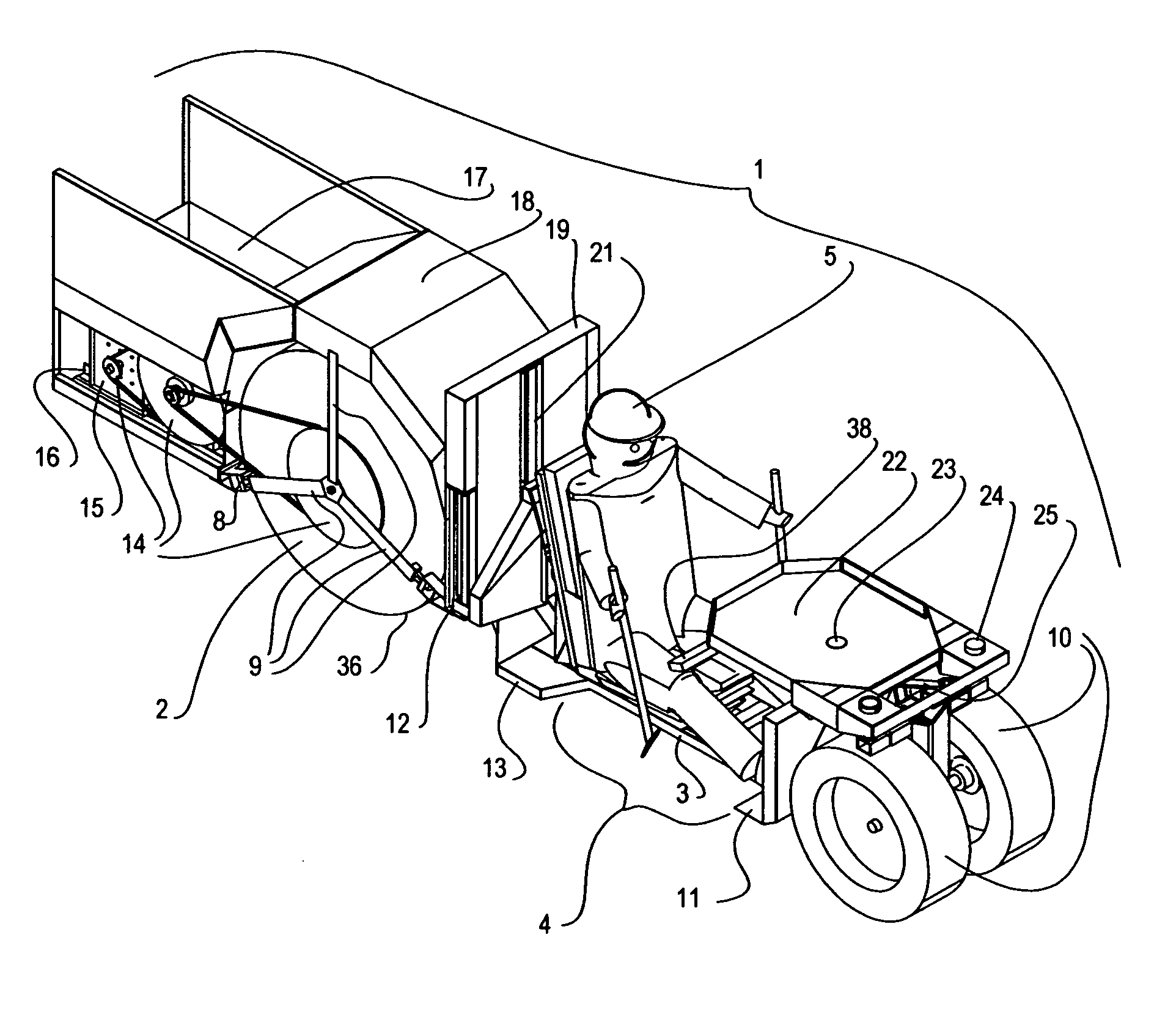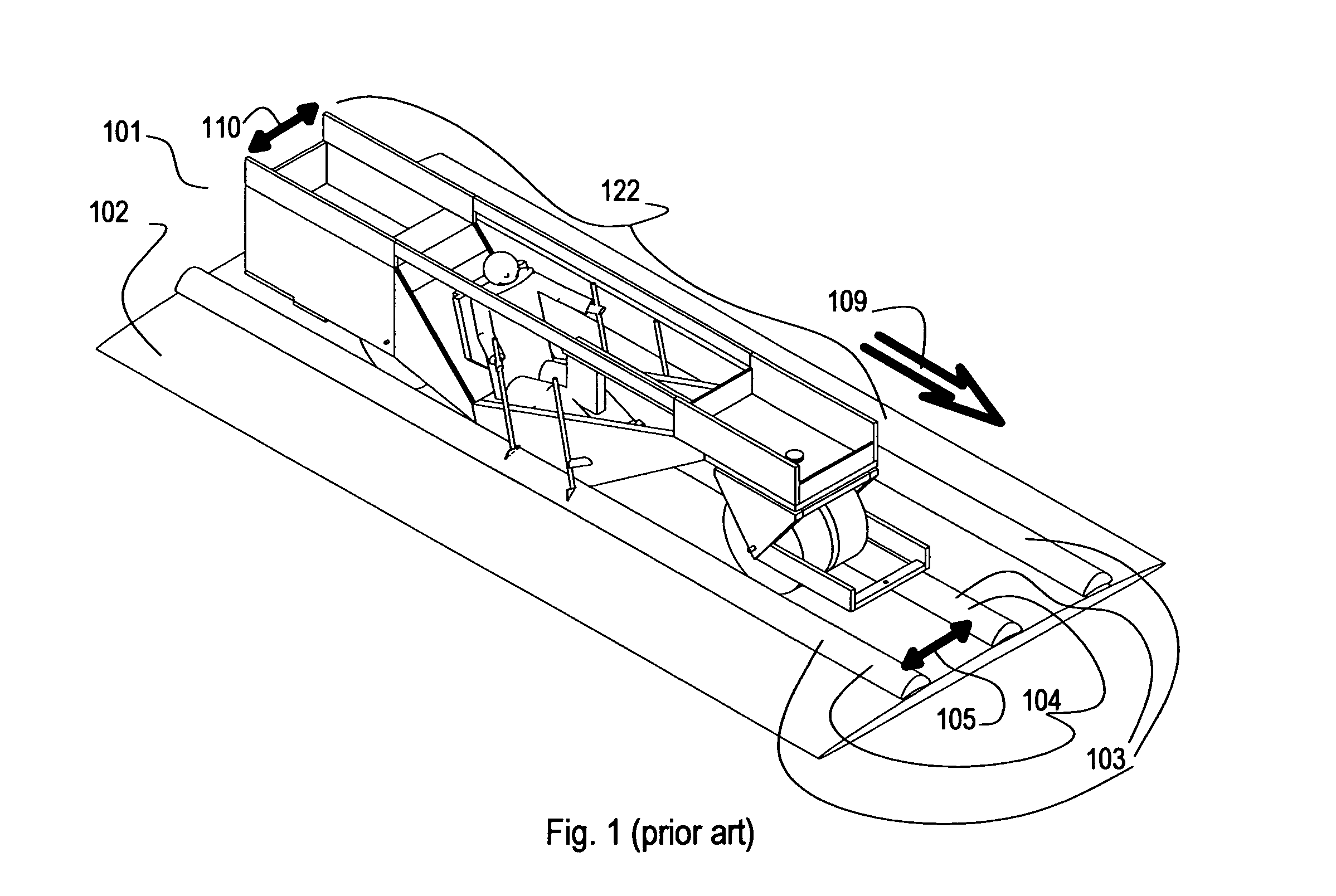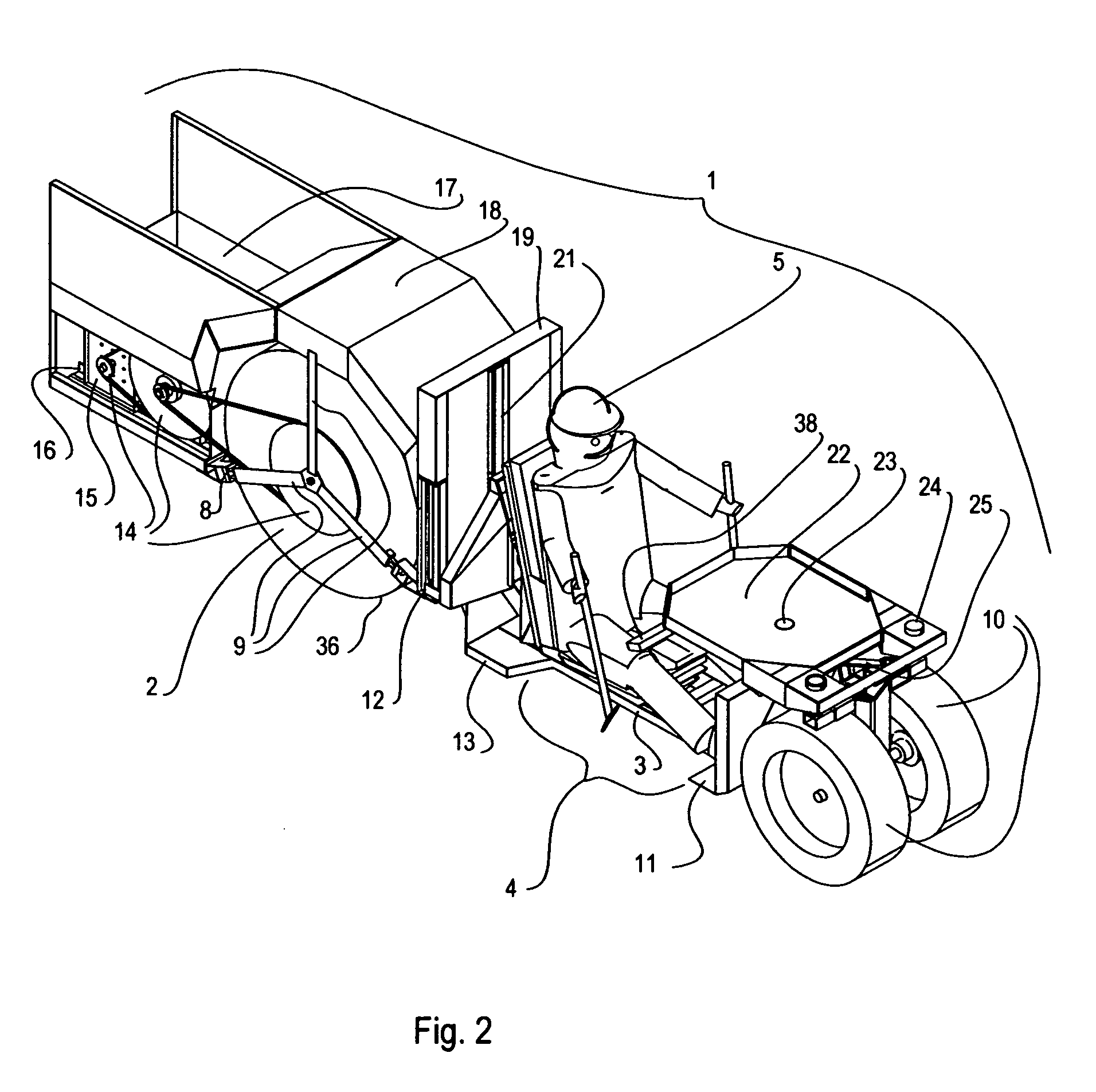Field work vehicle
a field work and vehicle technology, applied in the field of agricultural vehicles, can solve the problems of difficult to do needed work from a large vehicle, and difficult to find workers and pay them enough, etc., to achieve low vehicle profile, low speed, and large ground contact
- Summary
- Abstract
- Description
- Claims
- Application Information
AI Technical Summary
Benefits of technology
Problems solved by technology
Method used
Image
Examples
Embodiment Construction
[0037]The background art clearly shows limited extension of industrial technology to the agricultural world to provide what could be important changes in agricultural practice. Thus that practice carries on inadequately, seemingly unaware that industrial approaches could minimize the difficulty and discomfort of the work, not to mention what such approaches could do to enhance productivity of both workers and land. Surprisingly, it appears that it is possible to make agriculture significantly more profitable.
[0038]FIG. 1 (prior art) shows an initial concept vehicle for operating in a single row space and enabling much improved access to crops and much improved working conditions. FIG. 2 illustrates the present invention having similar purposes, but being superior due to more advanced implementation.
[0039]The here invented vehicle 1 utilizes a wide rigid wheel system 2 that provides maximum stability and causes a minimum of energy loss due to earth depression. Front 10 and rear wheel...
PUM
 Login to View More
Login to View More Abstract
Description
Claims
Application Information
 Login to View More
Login to View More - R&D
- Intellectual Property
- Life Sciences
- Materials
- Tech Scout
- Unparalleled Data Quality
- Higher Quality Content
- 60% Fewer Hallucinations
Browse by: Latest US Patents, China's latest patents, Technical Efficacy Thesaurus, Application Domain, Technology Topic, Popular Technical Reports.
© 2025 PatSnap. All rights reserved.Legal|Privacy policy|Modern Slavery Act Transparency Statement|Sitemap|About US| Contact US: help@patsnap.com



